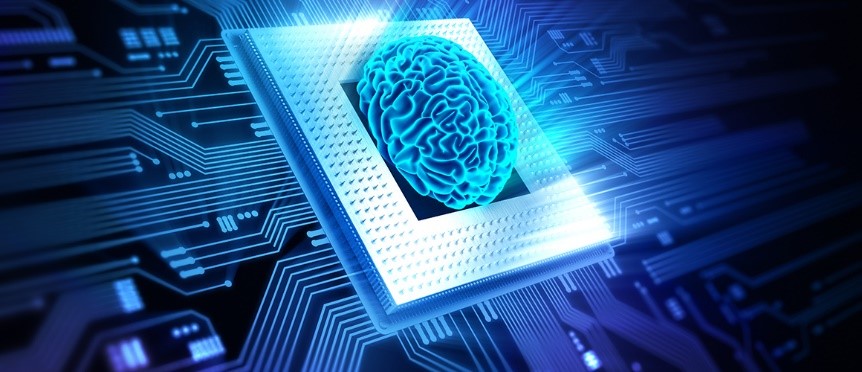Imagine you’re doing your homework in your bedroom, but you don’t have any of your schoolbooks. To get the answer to each question, you have to travel to the library, find the right book, take it home, write down the answer, and then bring it all the way back to the library. This is what current computers do, and it’s called the Von Neumann architecture. The computer stores information in the RAM (the library), does calculations in the CPU (the bedroom), and spends quite a lot of energy and time moving bits of information between the two.
In a neuromorphic computer however, logic and memory are in the same place – as if you put a bookshelf in your bedroom. ‘Neuromorphic’ means that the chip is designed to be ‘brain-like’. In the brain, neurons and synapses house both logic (calculations) and memory (storage of information) in the same place. By processing information in a computer in a similar way, complex calculations can be done more quickly and at lower energy cost. One type of device which may allow us to build this kind of logic-in-memory is magnetic RAM (MRAM).
MRAMs use magnetic materials to store information and to do logic. In the same way as a bar magnet has a North pole and a South pole, you can consider a lump of magnetic material as a collection of lots of small regions, each with its own North and South pole. By setting up neighbouring regions of the material to have their ‘North poles’ (or magnetisation direction) facing in the same way or opposite ways, you can store information. The electrical resistance of the device depends on the magnetisation direction, which is the basis of logic operations in the MRAM. The problem is, we don’t currently have a quick way to measure the direction of the magnetisation at a particular location – this makes it difficult to understand the processes happening in the device, which limits the quality of device that we can make.
My research works towards next-generation neuromorphic computer chips by bouncing light off magnetic materials to study how they can be used in MRAM.
While an MRAM is in use, the direction of magnetisation changes as the device is switched. This involves structural changes within the material on the atomic scale. In my experiments, I use a combination of laser light and some clever ‘plasmonic’ metal structures . These plasmonic structures have free electrons which oscillate when hit with light of the right colour; and this allows us to concentrate intense light on a small area of the magnetic material. The way that the light interacts with the material changes slightly as the direction of magnetisation changes. Using this highly concentrated light, I can closely study these nanoscale changes in the material. In this way, I hope to be able to build a tool that allows us to gather information about the magnetisation direction of the material in an MRAM quickly and easily…a step towards building that bookshelf in your bedroom!
NanoDTC PhD Student, c2020

